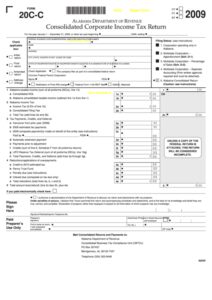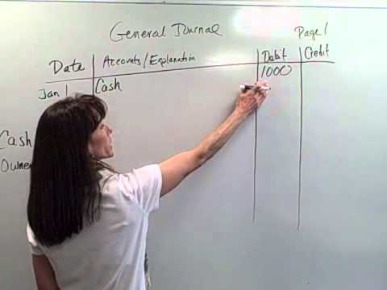with Formula

In this case, interest compounds every moment, so the accumulated interest reaches its maximum value. To understand the math behind this, check out our natural logarithm calculator, in particular the The natural logarithm and the common logarithm section. Compound interest is the addition of interest to the existing balance (principal) of a loan or saving, which, together with the principal, becomes the base of the interest computation in the next period. Tibor Pál, a PhD in Statistical Methods in Economics with a proven track record in financial analysis, has applied his extensive knowledge to develop the compound interest calculator.
Uncover the Power of Compound Daily Interest with Our Advanced Online Calculator
While our formula computes the future value, finding the interest portion is only one more step. All we have to do is subtract our present value from our future value because the future value is simply the present value plus interest. In this case, our total accumulated interest is $216.65 (once again, this is the sum of interest earned each year).
Example 3 – Calculating the interest rate of an investment using the compound interest formula
Compound interest takes into account both interest on the principal balance and interest on previously-earned interest. Simple interest refers only to interest earned on the principal balance; interest earned on interest is not taken into account. To see how compound interest differs from simple interest, use our simple interest vs compound interest calculator. Just enter your beginning balance, the regular deposit amount at any specified interval, the interest rate, compounding interval, and the number of years you expect to allow your investment to grow.
Example 1 – basic calculation of the value of an investment
But banks also have to be competitive with other opportunities that savers have. This variation of the formula works for calculating time (t), by using natural logarithms. You can use it to calculatehow long it might take you to reach your savings target, based upon an initial balance and interest rate. Youcan see how this formula was worked out by reading this explanation on algebra.com. Start by multiply your initial balance by one plus the annual interest rate (expressed as a decimal) divided by the number of compounds per year. Next, raise the result to the power of the number of compounds per year multiplied by the number of years.
- The type of account with the most access to funds — a checking account — typically earns minimal, if any, interest.
- In June 2024, top savings rates are around 5% APY while some one-year CD rates remain above 5% APY.
- The effective annual rate (also known as the annual percentage yield) is the rate of interest that you actually receive on your savings or investment after compounding has been factored in.
How Compound Interest Grows Over Time

FV - The FV function calculates the future value of an annuity investment based on constant-amount periodic payments and a constant interest rate. Looking back at our example, with simple interest (no compounding), your investment balanceat the end of the term would be $13,000, with $3,000 interest. With regular interest compounding, https://www.quickbooks-payroll.org/ however, you would stand to gain an additional $493.54 on top. If you're using Excel, Google Sheets or Numbers, you can copy and paste the following into your spreadsheet and adjust your figures for the first fourrows as you see fit. This example shows monthly compounding (12 compounds per year) with a 5% interest rate.
We'll use a 20 yearinvestment term at a 10% annual interest rate, to keep things simple. As you compare the compound interest line tothose for standard interest and no interest at all, you can see how compounding boosts the investment value. Money market funds are an example of an attractive nonbank option for depositors, according to New York Fed researchers.
It helps individuals make informed decisions about investing, borrowing, and planning for the future by providing accurate projections of how money will grow or diminish over time. A compound interest calculator can help individuals estimate how much they need to save regularly to reach their retirement goals and ensure a comfortable financial future. Your initial investement of plus your investment of at an annualized interest rate of will be worth https://www.quick-bookkeeping.net/the-best-accounts-receivable-financing-options/ after when compounded . Compounding can help fulfill long-term savings and investment goals, especially if you have time to let it work its magic over years or decades. When the returns you earn are invested in the market, those returns compound over time in the same way that interest compounds. When you invest in the stock market, you don’t earn a set interest rate, but rather a return based on the change in the value of your investment.

In order to adjust the rate, we must divide it by 2, since we are now earning 2% per period rather than 4%. This may seem a little confusing, but just remember that no matter how many periods over which your principal is compounding, your compounding rate must match the length of the period. If an amount of $5,000 is deposited into a savings account at an annual interest rate of 3%, compounded monthly, with additional deposits of $100 per month(made at the end of each month).
So, for the borrower, the interest rate is the cost of the debt, while for the lender, it is the rate of return. A is the future value of the investment/loan, including interest. Ancient texts provide evidence that two of the earliest civilizations in human history, the Babylonians and Sumerians, first used compound interest about 4400 years ago.
Interest can be compounded on any given frequency schedule, from continuous to daily, monthly, quarterly to annually. When calculating compound interest, the number of compounding periods makes a significant difference for future earnings. Compound interest is most potent when you let your money earn interest for a long time. This option will help you understand how long it will take for your investment to reach a certain balance. In that case, it will take about 30 years with an initial investment of $25,000 and an interest rate of 10% (compounded monthly). If 30 years is too long, you can use this information to decide to increase your initial investment or find another investment that has a higher interest rate.
See how your savings and investment account balances can grow with the magic of compound interest. A high rate environment tends to be good news for saving money in bank accounts, but remember that other factors can determine the rate you get. As an example, $1000 with a fixed rate of return of 7% will take around 10 (72 divided by 9) years to become $2000. If you invested $10,000 which compounded how much do small businesses pay in taxes annually at 7%, it would be worth over $76,122.55 after 30 years, accruing over $66,122.55 in compounded interest. More so if you look at the graph below, the benefits of compound interest outweigh standard interest by $45,122.55. Below you can find information on how the compound interest calculator works, what user input it accepts and how to interpret the results and future value growth chart.
If you’re an avid saver, you’re probably familiar with high-yield savings accounts and high-yield CDs. These accounts often have rates several times the national average and are mostly available at online banks and online credit unions. These branchless institutions don’t have the overhead costs of brick-and-mortar banks, so they can provide — and compete for — customers with higher rates. In practice, banks and other investments vehicles use yearly, quarterly and monthly compounding periods, in that order. Banks generally provide saving accounts with yearly capitalization of the interest while investments in stocks that pay a dividend have yearly, quarterly or monthly payments. The Rule of 72 is a simpler way to determine how long it'll take for a specific amount of money to double, given a fixed return rate of return that is compounded annually.
